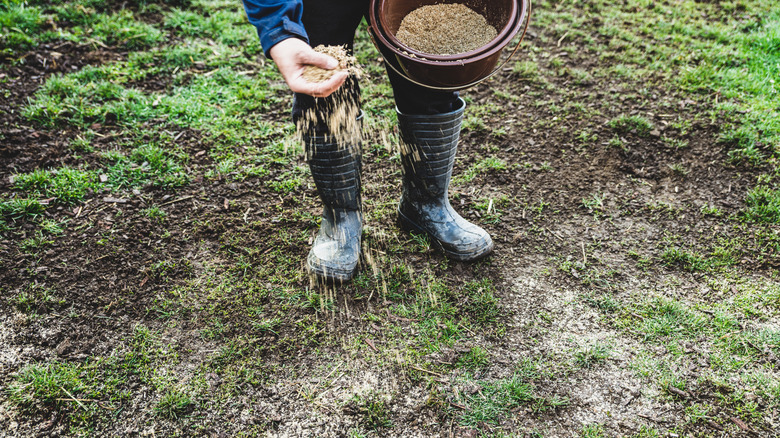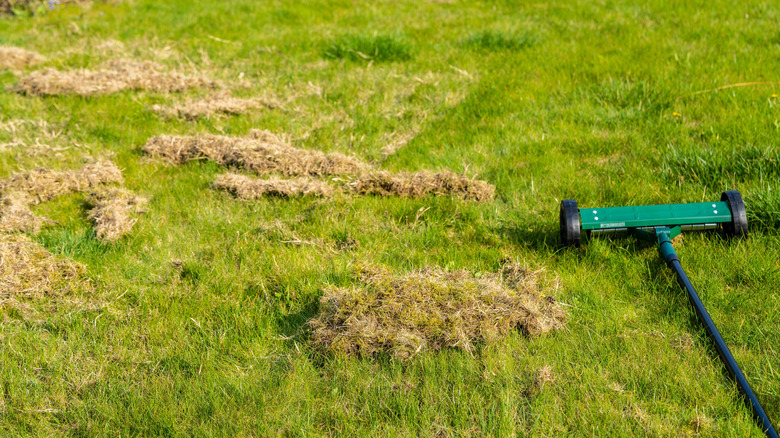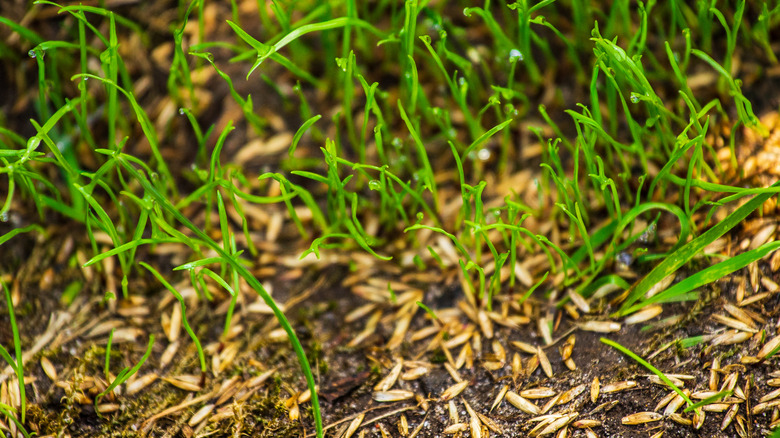Mistakes To Avoid When Dormant Seeding Your Lawn
Dormant seeding your lawn is a great way to make your yard fuller when the grass begins to grow again in the spring. It entails spreading seed in the yard towards the end of winter; this way, the grass seeds remain dormant in the soil until temperatures begin to climb in the spring. If you have a cool-season lawn, dormant seeding gives your grass the gift of time — time needed to germinate and mature before weeds sprout and start competing for sunlight and nutrients. By giving grass an edge over the weeds, dormant seeding helps you grow a healthy lawn without harsh chemicals.
But while dormant lawn seeding gives your grass a much-needed head start, there are mistakes you must avoid making in the process. House Digest spoke exclusively with Bryan Clayton, CEO of GreenPal to learn what errors are often made when dormant seeding and how to prevent them. "Dormant seeding can be tricky, but with the right steps, it works great," Clayton explained, adding that the common mishaps people make are planting the wrong type of grass, seeding too early, and failing to prepare the soil.
Wrong choice of grass, poor timing, skipping soil preparation
You won't achieve success with dormant seeding if you use this method on the wrong type of grass. "Only cool-season grasses like tall fescue work. Warm-season grasses like Bermuda[grass] won't germinate," Clayton told House Digest exclusively. "Annual rye works in winter, but isn't a long-term solution," he added. Apart from tall fescues and annual rye, cool-season grasses include Kentucky bluegrass, perennial ryegrass, fine fescue, and tall fescue. Naturally, before choosing a type of grass to plant in your yard, do some research to ensure it will thrive your climate.
Seeding too early is another grave error that's nonetheless easy to fix by simply waiting until the right time. According to the expert, "Seed rots if it's spread too early. Wait until late February so it's ready to germinate with the first spring warm-up."
Clayton also warns about the consequences of skipping soil preparation. "Without prepping the soil, the seed won't take root," he told us. "Aerate or dethatch for better seed-to-soil contact," he said. Taking the time to get the soil ready can make the difference between a bare and a luscious yard come spring.
Steps for dormant seeding your lawn
According to Clayton, dormant seeding boils down to four key steps. Once you've settled on a suitable cool-season grass to grow, begin by loosening the soil with aeration or dethatching. If you're unfamiliar with this process, learn how to aerate your lawn for healthier grass first. After loosening the soil, you can begin sowing the grass seeds. Clayton recommends that you use a seed spreader so that the grass seed is evenly distributed throughout the entire lawn. Next, cover the seeds with straw or mulch. This step ensures that your time and effort are not made pointless by wind and local wildlife displacing the seeds.
The last step is to simply wait for spring to arrive. As the temperatures begin to climb, the seeds you've sown will start to germinate. "Dormant seeding is all about timing, soil prep, and the right grass. Done right, you'll have a healthy lawn come spring!" Clayton told House Digest exclusively. Once the seeds have sprouted, consider these natural ways to keep your lawn green.


